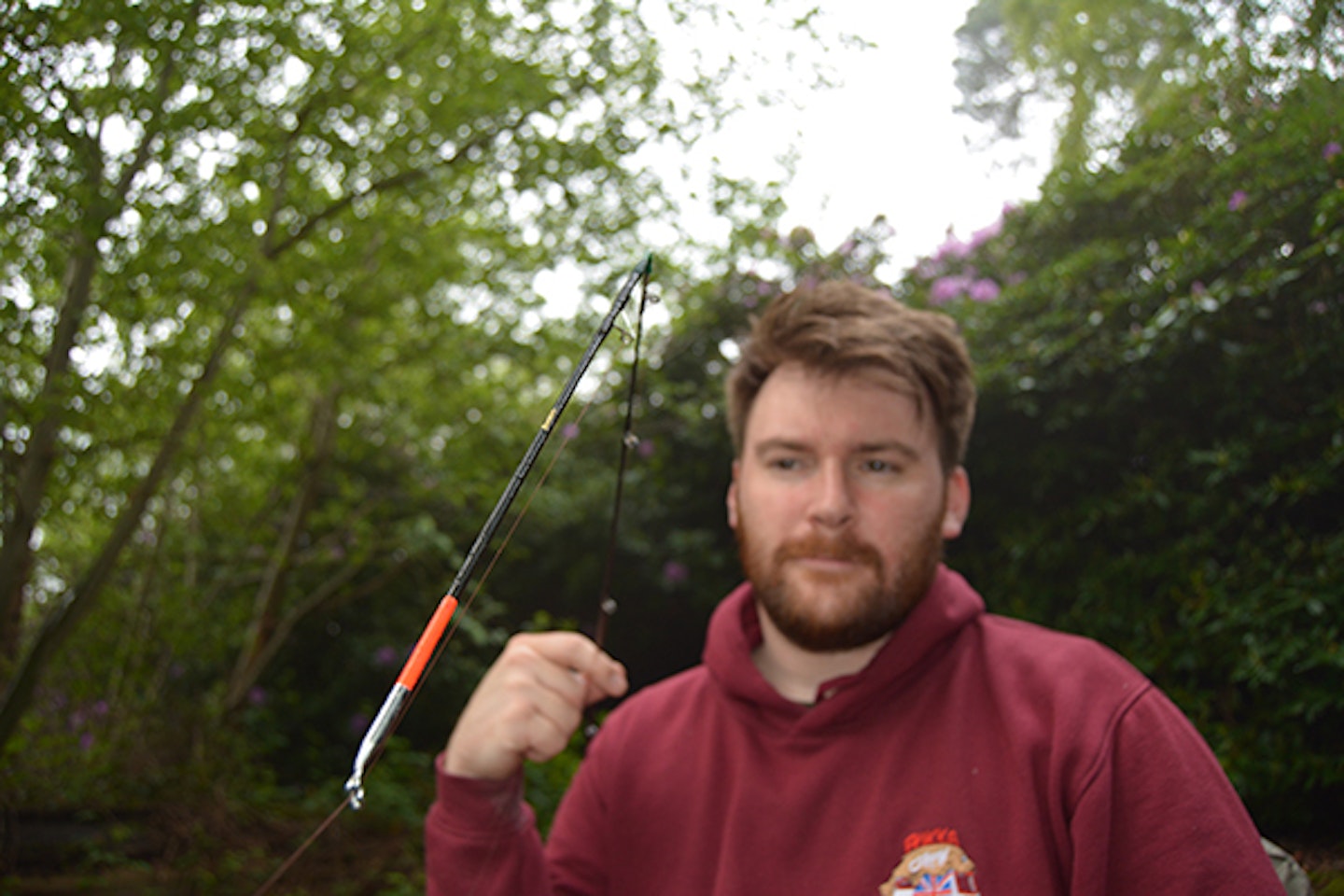It’s easy to get stuck in an angling rut. We tend to use the same tactics for the same fish, sometimes even the same approach for a number of different species.
Some of the deadly ‘old school’ methods have been neglected, a shame, as there’s some fantastic ‘forgotten fishing’ to be had – like swingtipping for bream.
Not only can this put together a big bag of bream, but it has its place in the specimen world for tricking big bream too.
For me, the advantage the swingtip has over the quivertip is that smaller, tentative bites are easier to spot and hit. You’ll often find that on pressured waters fish will sit over the feed and often only move just enough to tighten the line. Then, when they suspect something isn’t quite right, they drop the hookbait.
However, with a swingtip in place you can see this movement much more easily, and be ready…
SETTING UP
I find that the best way to set up while swingtipping is to sit at a slight angle from where you are casting to and where the rod rests are placed. This way you can see the tip with ease, and bites are more easily spotted.

I also tend to have the rod rests set at a height so that when the line is slack, the tip is under water by a few millimetres.
Then, when you can tighten up by just a fraction, the tip eye is just above the surface and allows you to retain the benefits of ultra-light resistance and still be able to spot drop-backs – the tip simply dips below the surface.
When you see any indication, even if it’s just a small tap of only half-an-inch, try following the bite with the rod.
Often this will trick the fish into thinking the bait is safe, and you’ll find that those tiny plucks turn into the classic sail-away bite.
However, at other times the bites are big sweeping takes that are impossible to miss!
BAITING UP
Because my fishing is usually based around short after-work sessions, I don’t tend to fill the lake or river in with bait, which often tends to be the way with bream fishing.
I feel that by doing this, I’m missing out on the chance of a quick bite. To begin with, I feed little and often, and only when I am confident that there are fish coming in to feed will I increase the baiting to keep them there.
Bream are quite capable of hoovering up a swim and then disappearing in a short space of time, so keep them interested if you want to keep catching!
Famously, bream will feed on pretty much anything you throw their way but I tend to stick to a simple worm and caster, or a pellet and boilie approach.
There is so much pellet and boilie going into venues now that these baits will appear just as natural to fish as anything else.
The first thing I would look out for are rolling fish. If you’re fishing where they are, then you’ve got every chance of catching them.
It’s also worth remembering that bream don’t always follow the rule book. I’ve heard it said so many times that bream don’t like hemp, they don’t like weed, and they’re all at range. However, I’ve caught some of my best bream over hemp, in weedy areas and even from right in close.
The one thing I have noticed is that most of my better catches have been in deep water, be that a 6ft margin or 30 yards out in 12ft of water.
I also feel confident if there is a nice chop on the water, as I feel this breaks up the skyline for the fish and they feed with more confidence.
SIMPLE RIG
I use a running rig, as it doesn’t impact on the low resistance qualities this tactic has to offer.
I like to start off with a 6lb mainline, which I feel is more than enough to safely land the largest of bream.
It also gives you the benefit of being able to play the fish and feel the delightfully fast lunges the species can make – something I feel is lost when catching fish on overly strong tackle.
I use a small bomb or cage feeder which is attached to a link swivel threaded on to the line.
Next comes a rubber bead to absorb shock of the link bouncing against the swivel, which has a 4lb-6lb hooklink attached. Hook size depends on the bait used, but I tend to use a size 14-12.
My starting hooklength is 5ins-6ins long, but I will lengthen or shorten it until bites are forthcoming – it really can pay dividends if you make subtle changes until you find what is right for the day.
So, next time you’re out thinking that the fish are there but you can’t buy a bite, try something a bit different and go swingtipping!
.jpg?ar=16%3A9&fit=crop&crop=top&auto=format&w=1440&q=80)